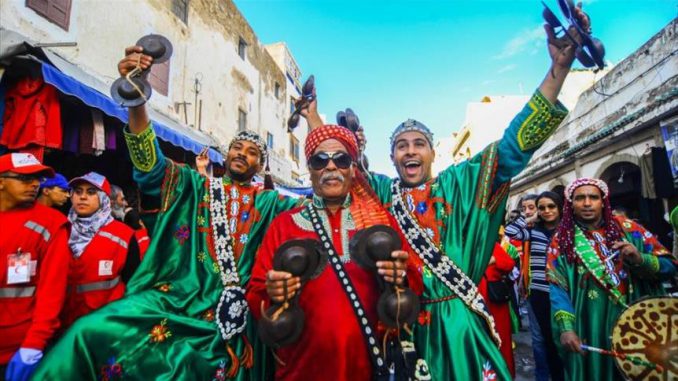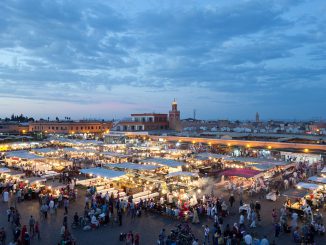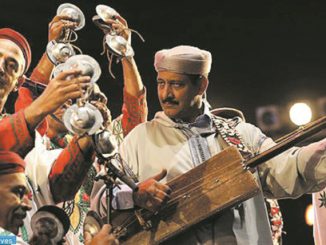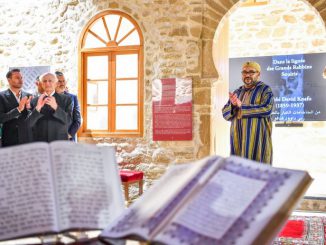
Researchers are far from unanimous about the origin of the term Gnawa. There are those who claim that it comes from the word Kenya or Guinea, which corresponds to the region from which people came to Morocco. Others believe that this term comes from the word “Knaoua” which means “slaves” in Arabic. Still others argue that it is an Amazigh term derived from the word “Aknaw”, which means “the land of the black man”, just as it means “the person with incomprehensible language”.
The Gnaouas are descendants of a line of slaves who lived in an area called the Empire of Ghana, now the State of Mali. They arrived in Morocco at the end of the 16th century, from Timbuktu, in caravans carrying gold and slaves. They settled in different cities and merged with the Moroccan society.
Thus, the Gnaouas are present in Meknes, Rabat, Marrakech, Ksar Lakbir, etc., but their fiefdom is located in Essaouira, whose port served as a link of trade and communication between Morocco and Africa, just as this city was their first stop before they dispersed in the rest of Morocco’s regions. Essaouira is also home to their spiritual sanctuary, the zaouia Sidi Bilal, the muezzin of the Prophet Mohammed who suffered from the atrocities of slavery in the pre-Islamic era. It is this Zaouia that hosts the annual Moussem of the Gnaouie brotherhood.
The Gnaouas play a strange music that emanates from the depths of the soul and reflects so much suffering. Some critics compare this music to jazz or black American blues. Its words are incomprehensible, sometimes mixed with a few supplications and memories and mention the names of “kings”, but its rhythms are directly addressed to the soul, because they are deeply rooted in pain and full of tragic references. The dances associated with it express the desire to be freed from the yoke of slavery. These are sad tales of ancient myths and beliefs, which the Gnaouis tell their audiences through the “Qraqebs”, “Hajhouj” and drums, while embarking them in trances from which they only wake up after purifying their souls and calming their bodies.
Gnawa art has remained marginalized for many years, just as it has been associated in the Moroccan imagination with witchcraft, magic, begging and the spirit world. But, nevertheless, this art has succeeded in seducing a large number of people, both inside and outside Morocco, including international artists who have been enchanted and inspired by Tagnaouit music, among them the American singer Jimmy Hendricks and the British group Lead Zipling.
The Gnawa Festival, which is organized each year in Essaouira, with the support and personal supervision of André Azoulay, advisor to HM the King, and attracts audiences from all over the world, has succeeded in bringing this art to the highest level, UNESCO has just officially recognized Gnawa music as part of the intangible cultural heritage of humanity, thus rehabilitating this artistic heritage that is an integral part of Moroccan culture and civilization.




Be the first to comment